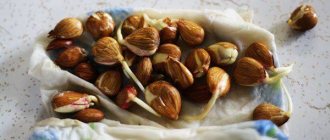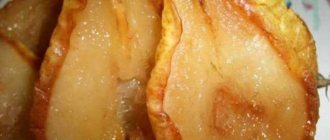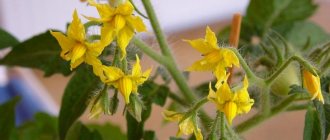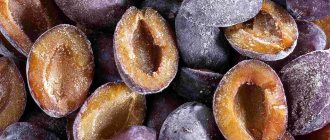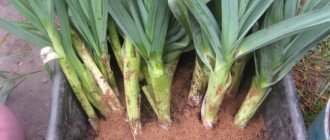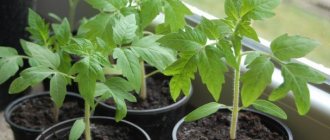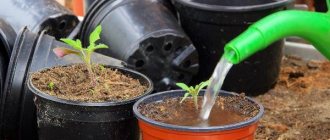How to grow pomegranate
Pomegranate is popular with many gardeners. It can be planted and propagated in various ways:
- bone;
- root layering;
- grafting;
- cuttings.
A tree is rarely planted with a seed. This is due to the fact that trees grown from seeds rarely inherit the qualities and characteristics of their parent specimens.
The most effective method of propagation is cuttings. With its help you can obtain high-quality and viable seedlings. Cuttings quickly germinate and take root, which is associated with the ability of plant cells to regenerate.
Cuttings
For cuttings, choose healthy shoots, annual or biennial. They are able to form a powerful and strong root system and take root well and quickly. A full-fledged pomegranate tree from a cutting will grow in 2 years.
When to take cuttings
Pomegranate is a tree that grows in countries with warm climates. In regions with a moderately cold climate, it needs to create special conditions for reproduction, growth and development.
Pomegranate is propagated by cuttings in central Russia in early spring. There is no risk of frost damage to indoor seedlings. Therefore, you can plant pomegranate at home at the end of February or at the beginning of March. Can be planted in autumn
Important!
For a tree growing at home, it is imperative to extend daylight hours and install additional lighting sources in the room.
Rules for taking cuttings
In order to propagate pomegranate cuttings at home and have them take root well, you need to properly prepare the material. To do this, it is important to follow a certain pattern:
- use cuttings taken from young and healthy trees;
- the optimal length of cuttings should be from 20 to 25 cm;
- each shoot should contain 4-6 buds.
Selected cuttings are cleared of thorns and inspected for the presence of harmful insects or their larvae. Do not use damaged or weakened branches. They are more often affected by infections and can become a source of infection for other, healthy seedlings.
Propagation of pomegranate by cuttings at home
It is not difficult to propagate homemade pomegranate: the plant forms well, and the Japanese technology of pruning a miniature bonsai tree will give it the desired size and beautiful shape.
There are several ways the culture propagates: by seeds, green shoots, woody cuttings. The last option is the most common, simple and effective. It is based on the plant’s ability to actively regenerate, while restoring all the functions necessary for the full functioning of both damaged organs and individual parts. For example, over a certain period of time, cuttings taken from a bush form new adventitious roots.
Important! Favorable regeneration and production of promising seedlings is influenced by the presence of strong and healthy shoots from the frost-resistant mother crop.
Advantages and disadvantages
Propagation of pomegranate by cuttings is one of the most effective ways. Woody or green shoots serve as planting material.
Advantages of this method:
- young seedlings grown from chibouks retain all the qualities inherent in the mother plant, so the features of their agricultural technology and care are known in advance;
- the roots are much more powerful than those of shoots obtained by sowing seeds;
- the rooted cutting grows quickly and after 2 years turns into a small tree;
- chibuki are cut from shoots of the last year, so they are less susceptible to diseases and wilting, in contrast to shoots from seeds, the quality of which is unknown before germination;
- pomegranate grown from cuttings is resistant to temperature changes.
This method of breeding also has disadvantages:
- in open ground, cuttings take root in June - August, the roots and young growth do not have time to fully strengthen before the onset of cold weather, which means that in winter they will need special conditions;
- The root system of seedlings is superficial, there is no main tap root, so they are more demanding of soil moisture;
- It is difficult to find high-quality planting material.
Rules for rooting cuttings
Before planting cuttings, they must be properly prepared. To this end:
- cut the 4 lower green leaves from the branch;
- cut the lower end of the cutting at an angle 2 mm from the eye;
- the top leaves of the shoot are also removed, leaving only the top three;
- if there is no growing point, it must be pinched (to allow roots and side branches to develop).
After pruning, the branches are left alone for several hours. After the sap flow stops, the leaves and cut ends are treated with Kornevin solution (the drug stimulates root formation).
Botanical description
Indoor pomegranate is a deciduous shrub of the Derbennikov family. The name of the plant is translated from Latin as “grainy”.
Its height depends on the variety, but does not exceed one meter. The trunk is branched, covered with numerous thin shoots, the bark is dense, light brown in color. Regular pruning of branches helps to form a compact, lush bush with many side shoots.
Pomegranate leaves are small, round in shape, with a shiny glossy surface. The leaf plate has a bronze tint. With the onset of autumn, the leaves turn yellow and fall off.
The flower has a rather unusual appearance. The perianths are rigid, elongated, and painted bright red. On the outside, they cover the delicate petals of the flower. Depending on the variety, their color can be white, pink or yellow.
In August, fruits begin to set on the tree. Pomegranates are small, their diameter does not exceed 10 cm, have a round shape, and are covered with a dense thin skin on the outside. Inside they are divided into chambers containing dark red grains. The fruits are edible, but have a very sour taste.
How to care for rooted cuttings
Pomegranate is very picky about conditions. It will grow only with a sufficient amount of light and a certain humidity. The growth and development of a seedling is greatly influenced by the regularity of watering and the timeliness of fertilizing.
Temperature and light
The young plant does not like cold or heat. The optimal temperature for it is 10 °C. when the temperature in the room increases or decreases, the seedling is transferred to a room with more comfortable conditions for it.
Basics of caring for indoor pomegranate
The degree of capriciousness of pomegranate can be defined as average. Although if we consider indoor fruit-bearing plants as a whole, the pomegranate tree will turn out to be quite unpretentious. It requires recreating climatic conditions close to the subtropical zone.
- Light mode. Pomegranate is extremely photophilous, and direct sunlight during the day is not a danger, but a blessing. Only on particularly hot days will you need some shading. The best place for a “green friend” is a south-facing window. Other areas will require additional lighting. In summer, it is recommended to take the pot with the tree out into the open air or at least onto a glazed loggia.
- Air humidity. There is no need for excessive dampness. Spraying is necessary only during dry periods, and to clean the leaves from dust, you should sometimes wipe them with a cloth soaked in clean water.
- The ambient temperature is within 20-26 degrees during active times. In autumn, pomegranates require less heat, and during the dormant period it is worth lowering the temperature to 5-10 degrees – for example, moving the plant to the basement. In summer, it is recommended to take the pot of pomegranate out into the open air more often to provide access to ventilation and freshness.
Read about the types of Anthurium flowers and what this plant brings to the family.
In this article you will learn how to propagate Gloxinia by leaves, cuttings and tubers.
And here we will share secrets about caring for indoor Hydrangea at home.
- Watering. When a tree blooms, it should be fed with liquid every day it bears fruit - even twice a day. In general, you should look at the condition of the soil and prevent the top layer from becoming dry. Closer to wintering, when the leaves begin to fall off, watering should be reduced to once a month or less, but the soil ball should not be allowed to dry out completely. Water must be used soft, filtered, and ideally rain or melt water. Lack of moisture leads to the loss of the decorative qualities of the plant.
- Feeding - only during the months of active growth and before the onset of the dormant period. In spring and summer, complex fertilizers containing nitrogen and phosphorus are suitable, in September-October - with potassium.
We can say that indoor growing conditions for pomegranate should be similar to garden conditions - plenty of sunlight, moderate moisture, fresh air. This tree has a pronounced dormant period, during which you should not “overwhelm” the green pet with care, that is, water it moderately, do not use fertilizing and leave it in a cool place, however, excluding drafts and sub-zero temperatures.
Moreover, the older the tree, the less it should be disturbed during the wintering period. From the first days of spring, the intensity of watering is slowly increased and they gradually begin to care for the pomegranate properly.
Transplanting pomegranate to a permanent place
Pomegranates are transplanted to a permanent place at the end of summer. When carrying out the procedure, use the following instructions:
- form a hole (0.7 m deep and 0.6 m wide);
- a support peg is installed in the center of the hole;
- drainage, a mixture of soil, sand and humus, is placed in the recess;
- a young bush is moved into the prepared hole (carefully so as not to damage the roots);
- sprinkle with earth and lightly compact.
The seedling is tied to a peg with a rope or twine. The root zone is watered with water and covered with mulch (it will protect the roots from the cold, become an additional source of nutrition for them, and prevent the appearance of parasites).
Important!
If several plants need to be planted in one container, then the distance between them should be at least 2 m.
Propagation of pomegranate by grafting and seeds
To propagate pomegranate by grafting, take a branch from a healthy fruit-bearing seedling. Cut the cutting and graft it into a split, into a side cut or behind the bark of another tree or shrub. The grafted pomegranate will bloom in 2 or 3 years.
Pomegranate can be propagated by seed. To grow a seedling from a seed:
- pour a layer of earth (6-8 cm) into the container and moisten it;
- grains are laid out on top of the layer (the distance between them should be 2-3 cm);
- cover the seeds with soil (2-3 cm), water.
Growing tips from professionals
Advice from professional gardeners will help you grow an exotic pomegranate tree yourself at home.
- For planting, it is best to purchase a special soil mixture intended for citrus plants. You can use a mixture of river sand, rotted leaves and turf soil.
- You cannot plant pomegranate in soil taken from where oak grew (it has high acidity).
- During the first years of life, the seedling must be replanted every year. Transplantation is carried out in early spring.
- The new pot for replanting should be 1-2 cm larger than the previous one. If the pot is too large, the root system will actively develop. The above-ground part of the plant will develop slowly.
The tree will bloom only when its root system is fully formed. Excessive root growth inhibits the flowering process.
The garnet is very beautiful. On it you can simultaneously see unopened buds, flowers and ripening fruits. In order to grow a tree from a cutting, you need to prepare the soil for precipitation, prepare the seedling and root the seedling, provide it with the following conditions: warmth, moderate humidity, good lighting, additional nutrition.
Rooting rules
In order for the cutting to take root successfully and soon begin to bear fruit, you must follow simple rules for this procedure.
Preparation
Before rooting, it is recommended to treat the prepared cuttings with a root formation stimulator. Sometimes the lower edge is simply dipped into a mixture of activated carbon and “Kornevin”, after which the remaining product is shaken off so that the cutting does not die, and placed in a bowl of water for rooting. The material is placed in a well-lit, warm place.
In water
Rooting a pomegranate in water is not difficult, especially since it is possible to control the viability of the petiole, as well as the development of its root system. If necessary, you can use additional drugs to help the plant grow and develop normally.
See also
Rules and methods for growing mangoes from seeds at home
Read
Within a week after placing the pomegranate petiole in water, the buds begin to swell. After 7 days, the first roots begin to hatch. Over the next week, the plant will develop and grow its root system. A strong and healthy tree develops a large number of powerful roots.
If it is noticeable that the roots are formed weakly and in small quantities, then it is recommended to remove the petiole from the water and place it in the “Kornevin” solution for 12 hours. After that, send it back to the glass jar with clean water. When a powerful and well-developed root system is formed, the pomegranate is transplanted into the ground.
In the ground
As soon as the cuttings planted in the soil form 3-4 shoots with leaves, they are planted in separate pots. All actions are performed as carefully as possible so as not to damage the delicate roots. A drainage layer is placed at the bottom of a pot of the required volume, then a nutrient soil mixture is poured in and the seedling is installed.
Pots of young pomegranates are placed on a wide, sunny windowsill. It is preferable that it be located on the south side. If the sun is very bright, then the tree is slightly shaded to prevent the leaves from burning. The ideal option would be to place the plant in a well-lit place opposite a window.
